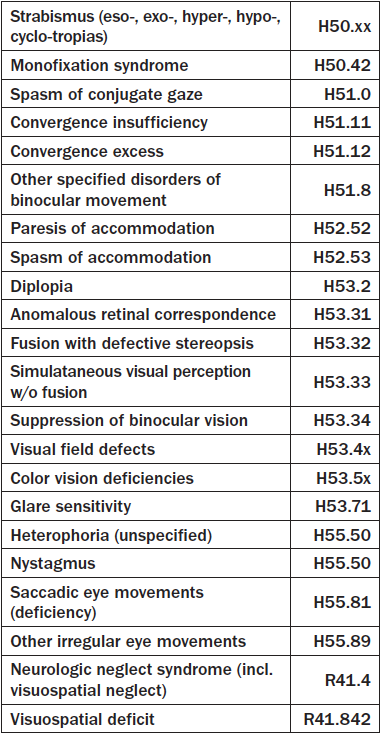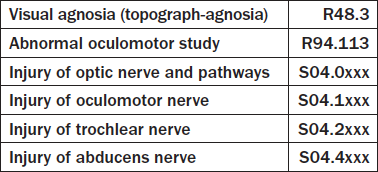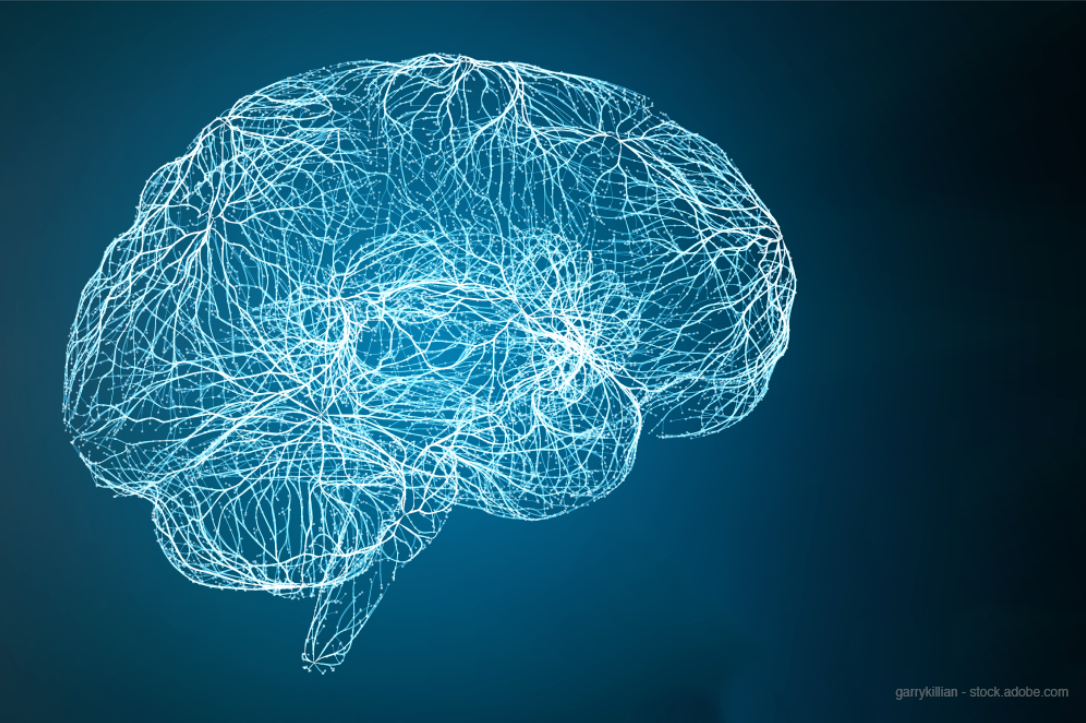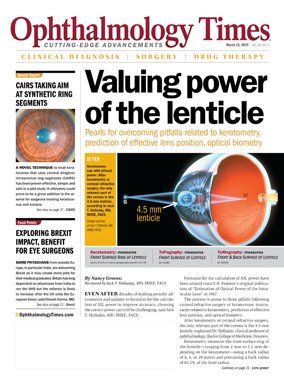Publication
Article
Digital Edition
Visual concerns following traumatic brain injury
Author(s):
Potential issues may impact reading speed, reaction time, memory, orientation, glare




Reviewed by Eric L. Singman, MD
The parts of the brain that are concerned with vision span its length and breadth, including the cerebrum, cerebellum, thalamus, midbrain, and brainstem.
Deficits and defects
An injury to these areas can cause a number of different defects in vision, as shown in Table 1, and can also lead to higher-order deficits including reading speed, reaction time, memory impairment, orientation, and glare.
Evaluation
“When evaluating a patient with a head injury, it is critically important to ask the correct questions,” said Eric L. Singman, MD, PhD, division chief of the general eye service, Wilmer Eye Institute, Johns Hopkins University School of Medicine, Baltimore. “It is often helpful to ask the patient’s significant other about their observations.
The evaluator should ask not only about the patient’s vision but also how the patient responds in different environments.”
Dr. Singman said at the very least, a patient should be asked whether they have noted a change in ability to perform normal activities of daily living, such as reading, driving, using a computer, riding a bicycle, walking, and performing fine motor tasks such as writing or sewing.
Patients also should be asked specifically whether any activities cause headache, nausea, glare, dizziness, fatigue, anxiety, or a sense of information overload.
TBI affects more than vision, and the vision expert might be the first provider a patient sees.
It behooves them to ask about other TBI-related concerns with the aim of possibly referring the patient to specialists. This can include whether they notice any mental slowness or suffer from tinnitus, neck pain, bruxism, sleep problems, weight changes, and mood swings.
Diagnoses
These conditions span a variety of visual diagnoses, some shown here with their ICD-10 codes.
Treatment team
A complete TBI team might include:
- Neurologist
- Neuro-ophthalmologist
- Neuro-optometrist/low vision specialist
- Neuro-otolaryngologist
- Neuro-psychologist
- Neuro-psychiatry
- Neurosurgeon
- Psychiatrist
- Social worker
- Speech therapist
The future
Continued developments in technology will allow improved diagnosis and treatment, including:
- The use of eye tracking systems to detect visuomotor defects and track progress. identify those areas of the brain associated with visual neglect.
- The use of diffusion tensor imaging to demonstrate damage from mild TBI too subtle to detect on standard imaging.
- The use of the fMRI, dark adaptometry and electroretinography (ERG) to check glare complaints.
- The use of the infrared pupillometry and autorefractometry to demonstrate defects in autonomic transmission to the intraocular muscles (iris and ciliary body) and track progress during recovery.
- The use of fMRI to objectively evaluate whether rehabilitative exercises for visuomotor deficits improve neuronal synchronization and recruitment
Disclosures:
Eric L. Singman, MD
E: esingma1@jhmi.edu
This article was adapted from Dr. Singman’s presentation at the 2018 meeting of the Current Concepts in Ophthalmology meeting in Baltimore. Dr. Singman has no financial interests or relationships to disclose.

Newsletter
Don’t miss out—get Ophthalmology Times updates on the latest clinical advancements and expert interviews, straight to your inbox.




